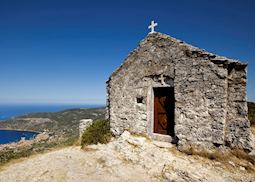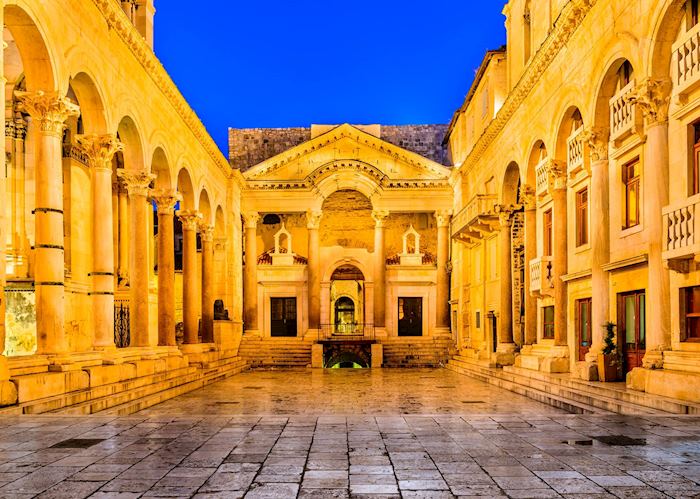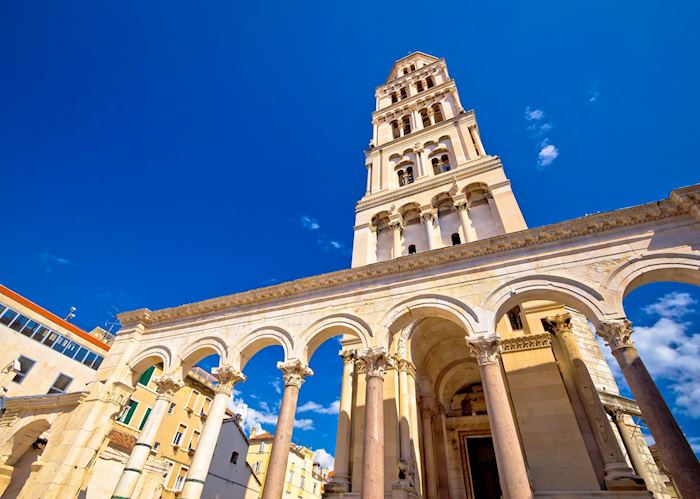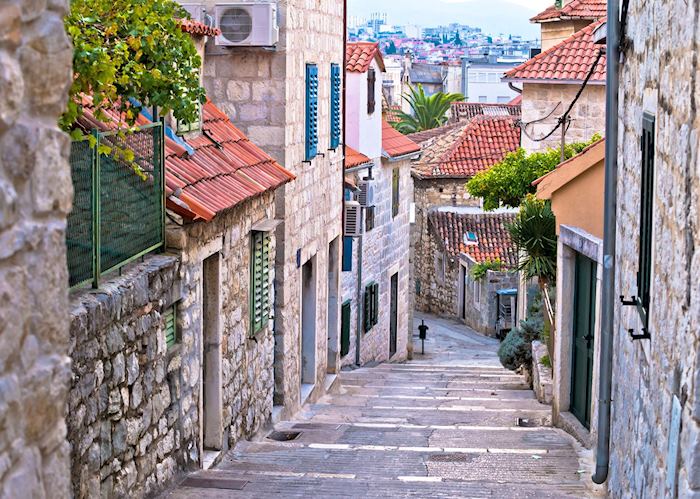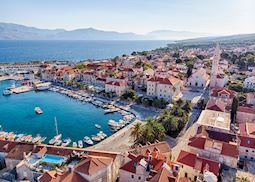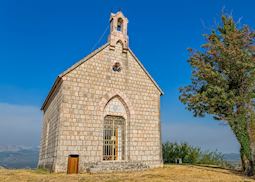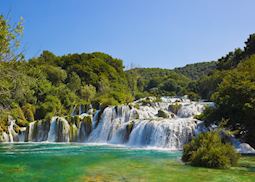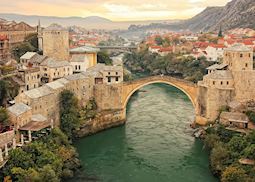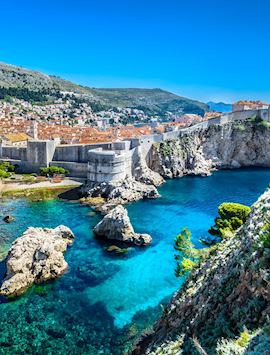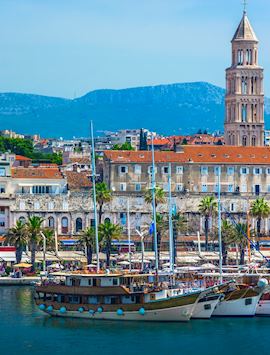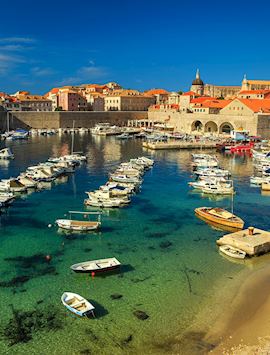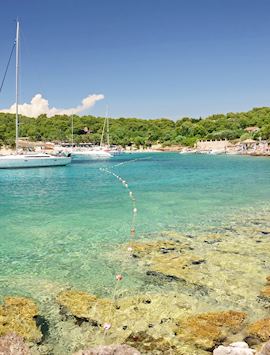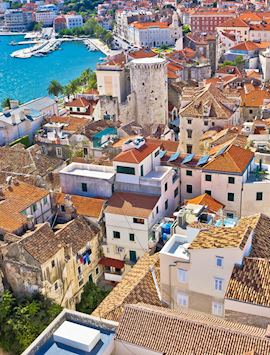There are few towns in Europe that can match the history and architecture of Split, where the 1,700-year-old alleyways of a city constructed at the turn of the 4th century AD still hum with daily activity. Walking about, it’s hard to grasp just how old Emperor Diocletian’s waterfront retirement complex is.
This private, half-day walking tour of the UNESCO World Heritage Site brings the 4th-century buildings and their original inhabitants to life, with your guide explaining the history of the complex, and its uses and development over the years.
You’ll be picked up from your hotel in Split, Trogir or Šibenik on the morning of your tour and taken to the Diocletian Palace. One of the most remarkable things about this Roman site is that it’s still in use, functioning much as it would have nearly 2,000 years ago.
The complex contains over 200 buildings linked by a warren of narrow streets and courtyards, many repurposed and redeveloped over the years to serve more modern functions. Imperial apartments became medieval tenements, Diocletian’s Mausoleum a cathedral dedicated to one of his victims, and the Temple of Jupiter became a baptistry.
Your guide will lead you through the streets, pointing out buildings of particular architectural or historical interest, explaining construction techniques, and bringing the daily lives of the people who lived in this extensive royal fortress to life. The city was later all but abandoned until the fall of the nearby Roman settlement of Salona led to an influx of refugees in the 7th century which revitalized its fortunes.
During the tour you’ll visit a variety of sites and plazas including Peristil Square, home to the white BraÄŤ-stone walls of the Cathedral of St Domnius, once Diocletian’s Mausoleum, and the Grisogono-Cipci Palace, which shows Roman arches incorporated into a 15th-century townhouse.
You’ll continue on to the town’s Ethnographic Museum and along with the displays, get a bird’s eye view of the city from the rooftop terrace. Passing through the Iron Gate, you’ll head to the open-air markets where people continue to shop for fresh fish and produce, just as they would have in Roman times.
Your guide will also talk to you about modern life in the city, efforts to preserve the ancient buildings, and strategies developed to maintain facilities for residents as well as visitors. Once you’ve completed the tour, your guide can offer tips on other places to visit or take you back directly to your hotel.
